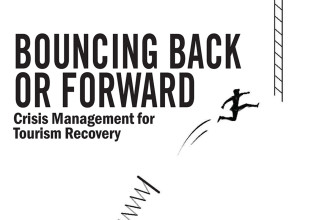
Nepal’s economic landscape has witnessed a series of significant shifts, particularly in the banking sector, with Nepal Rastra Bank (NRB) playing a pivotal role in shaping the trajectory of the nation’s financial stability. In recent months, echoing through the corridors of businesses and financial institutions is the screaming surge in interest rates. While NRB tries to navigate the volatile waters of the economy, the fluctuation in interest rates and inconsistent policies continue to dampen business temperament as all sizes of entrepreneurs and business houses struggle to keep afloat.
-1703845824.jpg?timestamp=1703845837624)
Ashish Jajodia
Director, Kabsons Industries
How have recent increases in interest rates affected business operations and financial planning?
The recent surge in interest rates has undeniably cast a substantial shadow over business operations and financial planning. The pronounced escalation in interest costs has triggered a domino effect, exerting considerable pressure on both current operations and aspirations for business expansion. Managing the working capital requirements has become an intricate challenge in the wake of these interest rate hikes. The confluence of heightened interest expenses, escalating global raw material prices, and a downturn in demand has resulted in a perfect storm. The working capital demands have surged significantly, straining resources and posing a formidable hurdle to smooth operations. The ramifications extend beyond the immediate operational challenges.
The global surge in raw material prices, coupled with sluggish cash flow, has exacerbated the strain on the working capital. This intricate dance of increased costs and decreased liquidity has left us grappling to strike the right balance and meet our financial obligations. Moreover, the impact on the financials is unmistakable. The surge in interest rates has translated into a substantial uptick in overheads. This surge, coupled with a dip in sales, has created a situation where we find ourselves navigating through the financial landscape with higher interest burdens and a diminished revenue stream.
In essence, the recent surge in interest rates has posed multifaceted challenges to our business. From the intricacies of managing working capital in the face of increased costs to the broader financial implications of elevated overheads amid lower sales, we are navigating uncharted waters. The need for strategic financial planning and nimble operational adjustments has never been more pronounced as we strive to weather this challenging economic landscape.
How have business investment decisions been affected in particular and what adjustments have been made to accommodate these changes?
The prevailing climate of heightened borrowing costs, coupled with the volatility in the financial landscape, has cast a shadow over investment decisions. The confluence of increased borrowing costs and a subdued demand scenario has acted as a significant deterrent to the initial investment plans, compelling to reevaluate and, in some cases, postpone new business projects. This direct impact on the investment decisions underscores the formidable challenges posed by the current economic conditions. In response to this challenging environment, businesses are compelled to make strategic adjustments to their financial strategies. The optimisation of cash flow has become paramount in efforts to navigate the complexities of increased borrowing costs.
Additionally, business people are adopting a prudent approach by lowering inventories, renegotiating existing loan terms, and implementing cost-cutting measures across all feasible areas. The aim is to create a leaner operational framework, allowing us to weather the financial headwinds and maintain financial stability. The concept of going asset-light has emerged as a viable strategy amid the current economic conditions. This entails a deliberate shift away from asset-intensive structures, enabling greater flexibility and resilience in the face of unpredictable market dynamics. By streamlining our asset base, we aim to enhance our agility and ability to adapt to the evolving financial landscape.
However, it’s essential to note that these adjustments are necessitated by the existing economic challenges. To truly stimulate investments and foster a more conducive environment, there’s a consensus among businesses that a moderation in interest rates is crucial. A shift towards single-digit interest rates would not only alleviate the burden on borrowing costs but also potentially invigorate investment activities and, in turn, spur demand – an essential catalyst for economic recovery in these challenging times.
Does this slowdown affect the workforce?
The current scenario, shaped by the impact of interest rates on businesses, has indeed cast a pall over hiring dynamics, directly impeding the expansion plans of companies and hampering the ability to bring in new talent. This has had a profound effect on workforce planning strategies, forcing companies to make tough decisions regarding fresh hiring, with some opting for reductions or freezes. Unfortunately, this disruption in hiring has far-reaching consequences, not only for businesses but also for job seekers who find their career opportunities curtailed, limiting the growth prospects of the workforce as a whole. The subdued job market is more than just a challenge for individuals seeking employment; it also carries broader implications for the overall perception of the country’s economic health.
A job market characterised by reduced hiring can be interpreted as a symptom of economic instability or sluggish growth. The scarcity of job opportunities has triggered a significant outward migration as individuals seek employment opportunities elsewhere, contributing to a reduction in the young consumer base within the country. One of the sectors most acutely affected by these dynamics is the construction and related industries, which traditionally serve as major employers in the economy. The lack of capital expenditure by the government has resulted in a substantial loss of jobs within these sectors, amplifying the economic ripple effect. The decline in capital expenditure not only restricts job creation within these industries but also dampens the overall economic vitality.
In essence, the slowdown in hiring, driven by the impact of interest rates on businesses, has created a challenging landscape for both job seekers and businesses alike. It not only limits career opportunities and growth prospects but also contributes to a perception of economic instability, exacerbated by significant outward migration and job losses in key sectors. Addressing these challenges requires a comprehensive approach that considers both short-term hiring strategies and long-term economic policies to foster a healthier, more resilient job market.
SME businesses are often more sensitive to changes in interest rates. In your opinion, how are these businesses being affected?
Undoubtedly, small and medium-sized businesses are highly affected by high interest rates, resulting in an increased cost of doing business. The impact is tangible and widespread, extending to the very core of these businesses’ operations. The heightened interest rates have cast a shadow over the demand and revenue streams of SMEs, translating into a direct reduction in profitability. The cost implications are significant, creating a challenging environment that requires nimble navigation to ensure sustainability. The challenges faced by SMEs extend beyond the immediate cost burden. Managing existing debt and financial obligations has become a complex juggling act for these businesses.
From meeting payroll obligations to ensuring a steady supply chain through payments to suppliers, handling inventory costs, and managing rent commitments, the elevated interest rates add layers of complexity to these financial responsibilities. This dynamic landscape necessitates a delicate balance to avoid financial strain and maintain operational integrity.
The impact on consumer spending is another critical facet of the challenges faced by SMEs. Higher interest rates contribute to a decline in consumer spending, resulting in a reduction in demand for goods and services provided by these businesses.
This decrease in demand further compounds the strain on revenue streams, creating a challenging cycle that requires strategic adaptation. Access to loans from financial institutions, a lifeline for many SMEs, is becoming increasingly elusive due to the tightened monetary policy reflected in higher interest rates. The decreased credit growth of banks further limits the growth potential of these businesses, hindering their ability to invest in expansion or navigate through challenging economic conditions. The confluence of these factors poses a formidable hurdle for small and medium-sized businesses, requiring innovative financial strategies and adaptability to sustain and thrive in this challenging economic landscape.
The government has implemented directives impacting banking metrics and interest rates. How confident are you in the effectiveness of these policies in maintaining economic stability, and what concerns do you have?
Government directives and policies aimed at impacting banking metrics and interest rates in Nepal are typically designed with the objective of maintaining economic stability. Such policies have the potential to wield influence over critical factors like inflation, lending rates, liquidity and the broader spectrum of economic growth. The underlying assumption is that these policies, when effectively implemented, can serve as stabilising forces for the national economy. However, my confidence in the effectiveness of these policies is tempered by the observed challenges in their execution. Despite the intentions behind the directives, the actual implementation has fallen short of expectations. One notable concern is the persistently high interest rates, which have not seen a significant reduction despite the government’s efforts.
The average cost of lending remains disproportionately high, indicating a misalignment between policy objectives and the practical outcomes in the financial landscape. Furthermore, despite ample liquidity in banks, the Credit-Deposit (CD) ratios are currently at record low levels. This discrepancy raises questions about the efficiency of channelling available resources towards productive economic activities. The sluggish credit growth in the economy is a concerning indicator, as it reflects a disconnect between the intended impact of policies and the real-world movement of capital within the economy. The overarching concern revolves around the sluggishness in credit growth and its broader implications for economic dynamics. A slow credit growth rate hampers the momentum needed for a vibrant and growing economy.
It restricts the flow of capital to businesses, limiting their capacity to invest, expand and contribute to overall economic development. In conclusion, while government directives aim to influence banking metrics and interest rates for the greater good of economic stability in Nepal, the effectiveness of these policies is contingent upon robust implementation. The current challenges, including high interest rates, low CD ratios, and slow credit growth, underscore the need for a comprehensive evaluation and potentially recalibration of these policies to ensure they align more closely with the intended objectives of fostering a stable and thriving economic environment.
-1703845923.jpg?timestamp=1703845958220)
Binaya Ratna Shakya
Liability Business Head, Muktinath Bikas Bank
How have recent increases in interest rates affected business operations and financial planning?
The recent increase in interest rates has significantly impacted business operations and financial planning in Nepal. The foremost repercussion lies in the elevated minimum interest rates set by banks for providing loans. This surge renders loans more expensive for businesses, thereby imposing a financial strain. From a business standpoint, the escalation in interest rates translates to a heightened need for funds to service debts. This, in turn, poses a formidable challenge for small and medium-sized enterprises that typically function within constrained cash flows, making it arduous to acquire additional loans for unforeseen expenses due to the augmented interest rates.
The ramifications extend beyond the immediate financial burden on debt repayment. SMEs, which often lack detailed financial planning, now find it increasingly challenging to navigate the financial landscape. The dearth of meticulous cash flow planning, financial projections and debt service planning exacerbates the difficulties. This shortfall in financial preparedness hampers the ability to gauge the true magnitude of the impact stemming from the recent increase in interest rates. Furthermore, the broader implications manifest in the operational facets of businesses. The elevated interest rates exert direct and indirect pressures on the cost of holding inventory and managing regular working capital.
These essential aspects of day-to-day operations are intricately linked to the financial health of the business, ultimately squeezing profit margins. The compounding effect of increased interest rates, coupled with a lack of comprehensive financial planning, leaves businesses grappling with the challenges of sustaining operations and preserving profitability in the face of heightened financial constraints. In essence, the recent surge in interest rates in Nepal has cast a pervasive shadow over the financial landscape, particularly for SMEs, necessitating a recalibration of financial strategies and planning to navigate these challenging times.
How have business investment decisions been affected in particular and what adjustments have been made to accommodate these changes?
The rise in interest rates has indeed cast a significant influence on business investment decisions. Investment, by its nature, hinges on the anticipation of a certain return. However, the escalation in interest rates has cast a shadow over this expected return, diminishing the economic viability of projects that were initially deemed feasible during the feasibility assessment. Consequently, businesses find themselves compelled to reevaluate and, in some instances, delay major investment decisions. This, in turn, contributes to the prevailing low credit demand in the market. To navigate these shifts, adjustments become imperative. Businesses must explore alternative financing avenues and one such adjustment involves a shift towards more equity financing, entailing an increase in equity capital or a reliance on retained earnings.
This strategic pivot serves as a response to the higher borrowing costs incurred due to the surge in interest rates. Moreover, businesses may implement cost-cutting measures as a proactive measure to offset the impact of these elevated borrowing costs. In addition to these adjustments, refinancing existing debt emerges as a viable strategy, where businesses seek more favourable conditions to alleviate the burden of higher interest rates. This may involve renegotiating terms or exploring alternative financing options, including government grants and subsidies or attracting equity investors. These adaptive measures are crucial in sustaining financial viability amid changing economic conditions.
Furthermore, strategic planning gains prominence in the face of interest rate fluctuations. Businesses must engage in comprehensive strategic planning and develop contingency plans to effectively address potential issues arising from the rise in interest rates. This forward-looking approach enhances resilience and equips businesses to navigate the complexities introduced by the evolving financial landscape. In essence, the impact of rising interest rates necessitates a multifaceted approach, encompassing adjustments in financing strategies, cost management, and strategic planning to ensure the continued sustainability of business operations.
Does this slowdown affect the workforce?
Certainly, the observed slowdown in hiring is a direct consequence of the impact of increased interest rates on businesses. The rise in interest rates translates to a higher cost of capital, prompting businesses to adopt a more conservative stance towards expansion initiatives. This, in turn, has a cascading effect on new job creation, as businesses divert their focus towards enhancing the efficiency and productivity of the existing workforce. One strategic approach involves investment in technology and training programmes as a cost-effective means to optimise operations. However, the implications extend beyond the internal dynamics of businesses.
The slowdown in hiring has a palpable impact on various stakeholders, influencing the overall perception of the country’s economic health. Investors, businesses and consumers alike are affected by this shift in hiring trends. The conservative approach to expansion and the corresponding slowdown in job creation can erode confidence among investors, businesses and consumers. For instance, the slowdown in hiring can trigger concerns about job security among employees, leading to changes in spending behaviour among consumers. The nexus between hiring trends and consumer spending habits plays a pivotal role in shaping the economic health of the country.
As job security becomes uncertain, consumers may become more cautious in their spending, contributing to a broader economic slowdown. In essence, the slowdown in hiring, driven by the impact of interest rates on businesses, creates a ripple effect that permeates various facets of the economy. It underscores the intricate interplay between business decisions, workforce planning, and the overall perception of economic health. Adapting to these shifts requires a nuanced understanding of the interconnected factors influencing hiring trends and consumer confidence, thereby fostering resilience in the face of evolving economic dynamics.
SME businesses are often more sensitive to changes in interest rates. In your opinion, how are these businesses being affected?
The sensitivity of small and medium-sized businesses to changes in interest rates is undeniable, primarily attributed to their size, financial structure and reliance on external financing. The impact on SMEs, especially those heavily reliant on debt financing, is noteworthy. The rise in interest rates directly translates to higher interest payments, resulting in reduced profitability for these businesses. This challenge is exacerbated by the fact that, unlike their larger counterparts, SMEs often face persistent difficulties in securing loans at favourable terms. The increase in interest rates further contributes to tightened credit conditions, posing additional hurdles for SMEs in accessing the necessary capital for their operations and growth initiatives. Limited access to financing emerges as a significant constraint for SMEs, impeding their ability to invest, expand or upgrade. The potential consequences are far-reaching, potentially stifling the growth trajectory of these businesses.
Unlike larger enterprises, SMEs lack the financial cushion to absorb the impact of unfavourable lending conditions, making them more vulnerable to the repercussions of rising interest rates. Moreover, the challenges extend beyond long-term strategic decisions, affecting the day-to-day operational aspects of SMEs. Higher interest rates amplify the operational expenses that SMEs incur regularly. This, in turn, creates additional challenges in meeting short-term financial obligations, putting a strain on their cash flow management. The confluence of reduced profitability, limited access to favourable credit terms, and increased operational expenses creates a complex web of challenges for SMEs, necessitating a careful and strategic approach to navigate the intricacies of the financial landscape.
In essence, the impact of rising interest rates on SMEs underscores the unique challenges faced by these businesses, ranging from reduced profitability to constraints in accessing essential financing. As integral contributors to the economic landscape, addressing these challenges becomes crucial for fostering the resilience and sustainability of SMEs in the face of evolving financial conditions.
The government has implemented directives impacting banking metrics and interest rates. How confident are you in the effectiveness of these policies in maintaining economic stability, and what concerns do you have?
The government’s directives impacting banking metrics and interest rates have undeniably shaped the operational landscape for banks. The banking sector, by virtue of its commitment to transparency and adherence to regulatory requirements, has earnestly complied with the various circulars issued by the central bank or the government. However, it’s crucial to recognise that banking is, at its core, a business entity with a bottom line aimed at earning profits and delivering favourable returns to investors, depositors and other stakeholders. In recent periods, the implementation of government directives has led to a compression of the bank’s income. While recognising the importance of contributing to the economic well-being of the country, it’s imperative to balance the interests of all stakeholders involved.
The effectiveness of these policies, particularly in maintaining economic stability, hinges on a nuanced understanding of the multifaceted challenges facing the banking sector and the broader economic landscape. While the government’s directives on interest rates address a pertinent aspect of the current economic conditions, it’s essential to acknowledge that they are not the sole determinants. A holistic assessment reveals that a business-friendly environment, tax policies, physical infrastructure, market conditions and overall government policies collectively play pivotal roles in shaping the economic landscape. Consequently, while the implemented directives concerning interest rates and banking metrics may contribute to economic stability, they alone may not suffice.
Concerns arise from the recognition that a comprehensive and multifaceted approach is required to address the diverse challenges impacting the economy. A myopic focus solely on interest rates and banking metrics may overlook other crucial factors influencing the economic health of the country. Thus, for the directives to be truly effective in promoting economic stability, a broader examination of the business environment, infrastructure and policy landscape is warranted. In conclusion, a balanced and comprehensive strategy that addresses the myriad facets of the economic ecosystem is essential to ensure enduring stability and growth.

Suman Rayamajhi
Managing Director, Upaya
How have recent increases in interest rates affected business operations and financial planning?
The current increase in the interest rate has adversely affected business operations and financial planning of all the businesses in Nepal. The surge in interest rates has led to higher costs, thereby raising concerns about the viability and sustainability of businesses. A 100-basis point increase on a 5% to 10% margin translates to a significant surge in the cost of business, ranging from 10% to 20%. Such changes have a profoundly adverse effect, particularly on capital-intensive and infrastructure projects. Over the last few years, we’ve witnessed a substantial rise in interest rates, moving from 8% to 10% to as high as 13% to 15%.
This drastic change of 300 to 500 basis points, especially in infrastructure projects, poses a serious challenge to the viability of the projects. This is particularly concerning given that the leverage in such projects is often around 70:30 or even 80:20 in terms of the debt-to-equity ratio. Many hydropower and capital-intensive manufacturing projects have experienced setbacks in their business operations, and their preliminary financial planning has taken a hit due to the increase in interest rates. The impact is profound, as the leverage ratios are significantly affected and the viability of these projects is now questionable.
Likewise, trading businesses that heavily rely on leverage for importing stocks have also been adversely affected by the increase in interest rates. The heightened costs are inevitably being transferred to the customer level, resulting in an increase in the prices of goods and services. This ripple effect through the supply chain further complicates the financial landscape for businesses in Nepal, creating challenges that demand strategic reassessment and adaptation to the new financial environment.
How haves business investment decisions been affected in particular and what adjustments have been made to accommodate these changes?
In the current economic landscape, marked by the global financial crises triggered by the post-pandemic impact and the ongoing Russia-Ukraine war, coupled with increased interest rates and concurrently tighter monetary policies aimed at mitigating risks in the highly exposed real estate and previously inflated stock market of Nepal, there has been a noticeable deceleration in economic activities. Many businesses are now operating at a reduced capacity, ranging from 50% to 60% of their previous year’s operations. The impact of this economic slowdown is evident on both sides of the borrowing equation. On one hand, despite a favourable liquidity position, bankers are displaying reluctance to lend easily.
On the other hand, businesses are exhibiting hesitancy towards expansion and making new investments under these challenging circumstances. The current economic scenario has led to a situation where cash is either trapped or excessively exposed in real estate and the stock market. This has particularly affected businesses that were previously adequately leveraged, as they now face challenges arising from the tighter policy environment. Despite ongoing dialogues with concerned authorities advocating for a relaxation of monetary policy, tangible and effective changes are yet to be realised.
While there are signs indicating a gradual decrease in bank interest rates due to the adequate liquidity situation, the business community remains cautious. Confidence in the stability of the financial environment is yet to be fully restored and there is lingering apprehension about a potential recurrence of the cycle of increased interest rates and tight liquidity. Consequently, the uptake of additional borrowing remains low under the current tighter policy scenario, as businesses adopt a prudent approach, awaiting clearer signals of financial stability before committing to further investments and financial obligations.
Does this slowdown affect the workforce?
In light of the ongoing challenges in business operations, there has been a discernible impact on workforce planning, leading to a slowdown in hiring. As the operational performance of businesses falls below expectations, some companies have found it necessary to resort to layoffs, while others have decided to halt hiring activities temporarily. The economic climate, characterised by increased interest rates and a general slowdown, has prompted a cautious approach among businesses regarding their workforce. One notable consequence of these circumstances is the phenomenon of brain drain being witnessed in Nepal. Historically, such migration was often associated with the blue-collar and labour classes; however, in the current scenario, there’s a concerning trend involving the departure of young, educated professionals from the middle working class.
Individuals working in sectors such as banking, insurance, corporate and startups are choosing to leave the country in pursuit of further studies and opportunities offered by dependent visas in other nations. The departure of this educated and skilled segment of the workforce is a matter of serious concern, as it represents a potential loss of valuable human resources for Nepal. The implications of this brain drain are far-reaching, particularly in terms of the quality of the workforce available in the country in the near future. These departing individuals, who contribute significantly to the current employment landscape, are not easily replaced.
Many are placing their professional aspirations on hold, awaiting a return to normalcy in business operations before considering reentry into the workforce. This trend poses challenges not only to the immediate hiring landscape but also to the overall perception of the country’s economic health. The exodus of skilled professionals may contribute to a perception of instability and may further complicate the recovery process. It underscores the importance of addressing the economic challenges comprehensively to retain and attract a robust workforce that can contribute to the long-term growth and development of Nepal.
SME businesses are often more sensitive to changes in interest rates. In your opinion, how are these businesses being affected?
Small and medium-sized enterprises are notably more sensitive to changes in interest rates, primarily because they operate their businesses with lower capital funds. This heightened sensitivity is compounded by the fact that SMEs often face challenges in accessing finance and in normal circumstances, they are subject to higher interest rates compared to corporate customers, as perceived by banks. In the current economic slowdown, SMEs find themselves grappling with a double burden. On one hand, their sales are being adversely impacted, affecting the top line of their financial performance. On the other hand, the increased interest rates add to the cost pressures on the bottom line. This dual challenge poses serious issues for SMEs in terms of their ability to service regular debt payments and manage the associated interest obligations. The slowdown in sales can be attributed to various factors, including reduced consumer spending, market uncertainties and overall economic contraction. This decline in revenue creates a significant strain on the financial health of SMEs, limiting their capacity to generate the necessary funds for debt servicing. Simultaneously, the increased interest rates add a layer of financial stress, making it harder for SMEs to manage their overall cost structures effectively.
The combination of these challenges puts SMEs in a precarious position, as they navigate the complexities of a sluggish market and heightened financial pressures. To address these issues, SMEs may need targeted support, including access to more favourable financing terms, assistance in managing debt obligations and measures that stimulate economic activity to revive their sales and overall business performance. Recognising the unique challenges faced by SMEs in the current economic climate is crucial for developing effective strategies and policies aimed at supporting the resilience and sustainability of these vital contributors to the economy.
The government has implemented directives impacting banking metrics and interest rates. How confident are you in the effectiveness of these policies in maintaining economic stability, and what concerns do you have?
In light of the recent changes seen in the mid-term monetary policy review and other directives, there is a sense of optimism, and I am hopeful that the government, especially Nepal Rastra Bank, is taking proactive steps to address the current economic challenges. Given the multifaceted nature of the economic slowdown, stemming from both controllable and uncontrollable factors, I believe that measured relaxation in policies and directives could play a crucial role in restoring normalcy and instilling confidence in the business environment. The specific mention of overdraft facilities and restrictions on lending against shares indicates a recognition of the nuanced challenges faced by businesses, particularly in the context of the real estate sector.
While it might be argued that such relaxations may not align perfectly with technically correct monetary measures, there is a pragmatic acknowledgment that they are the need of the hour to counter the existing economic slowdown. These measures, especially in overdraft facilities, have been influential in fuelling the real estate boom and their adjustment reflects a responsiveness to the evolving economic landscape. It is crucial to view these relaxations not as long-term solutions but as timely interventions to address the immediate challenges at hand. The call for a definite period for such policy adjustments is strategic, with the understanding that these measures should serve as temporary relief until the economy regains its momentum.
The suggestion of a phased tightening approach after the economic bounce-back demonstrates a thoughtful consideration for the long-term health of the economy. Without these policy adjustments, businesses find themselves caught in a double-edged sword, facing challenges from both policy constraints and the broader economic slowdown. The nuanced approach advocated by the guest recognises the dynamic nature of economic challenges and the need for adaptable policy responses. It remains to be seen how these directives unfold and whether they effectively contribute to rejuvenating economic activity and restoring business confidence in Nepal.






